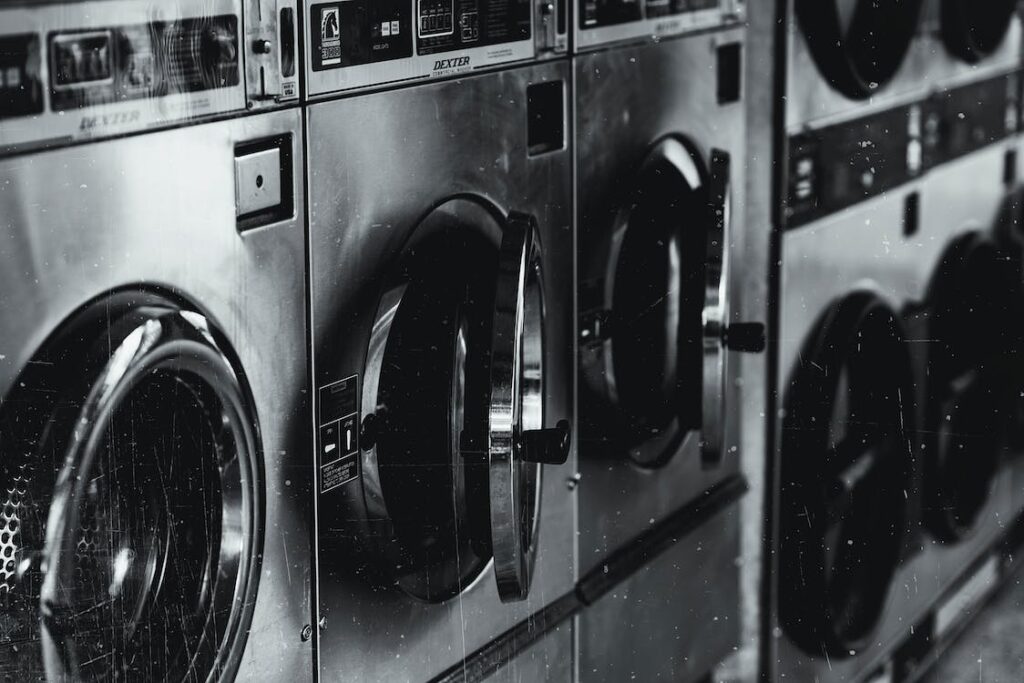Is the tumble dry low setting on your dryer malfunctioning? Have you tried adjusting the controls, but cannot seem to figure out what the problem is? Running your clothes on tumble dry low is the best way to increase their longevity, keeping them fresh and free of fuzz for years to come. Today, we will break down exactly how dryers work, give you key information about the tumble dry low setting, and discuss your options for what to do if your tumble dry low setting is not working.
Quick Navigation
What Is the Tumble Dry Setting?Defined
What Clothes Can You Tumble Dry?
Using the Tumble Dry Low Setting
What to Do If Your Tumble Dry Low Setting Is Not Working
How Do Dryers Work?
Circulating Air
The circulation of air is a key element to how dryers work. The air first enters the dryer through a hole in the front of your machine. It then sucks the air into the tumbler where it goes through the door and into the lint screen. Next, the fan pushes the air into a duct at the back of the machine. This duct runs all the way from the dryer to outside your house where the air exits as steam.
The Spin Cycle
If you have ever looked inside your dryer, you have seen the spin functionality, comprising the belt, tumbler, motor, and pulleys. The motor operates the tumbler in your dryer, with a belt surrounding the tumbler to ensure it spins properly.
The motor makes the silver pulley in your dryer run. The belt goes through the silver pulley, the black pulley, and around your tumbler. The black pulley in your dryer gives tension to the belt to help it spin.
The electric motor is also an integral part of the spin cycle as it runs the tumbler and dryer fan. The black pulley connects to the motor on one side and links to the fan on the other.
The Tumbler
When you select the tumble dry low setting, the flange and bushing of the tumbler make it spin and run the cycle. The rear of the tumbler is bolted onto the flange.
Control Mechanisms
The controls enable you to switch on your tumble dry low setting or any other setting you choose. They are comprised of gears, motors, electrical contacts, and cams.
The first control mechanism you need to know about is the cycle switch. By adjusting this switch, you determine how long you want the cycle to run and the cycle you want.
On the back of the cycle switch is a motor, with a small gear that triggers a larger gear inside. The motor enables the gear on the dial to turn. There are 4 cams connected to the gear that are linked directly to the switch.

Image via Pexels
Heat Buttons
The heat buttons control the level of heat circulating through the dryer during any given cycle. There are 4 contacts inside the heat controls.
Safety Devices
Finally, you have the safety devices in your dryer. Every dryer comes equipped with temperature switches. For instance, if you set your machine to tumble dry low, once it finishes the cycle, the switches move apart and turn off the dryer.
One temperature switch is near the lint screen while the other is near the heating mechanisms. If your dryer gets too hot, the first temperature switch turns off the power. The second switch turns off power to the machine if airflow is not circulating properly throughout the dryer.
What Is The Tumble Dry Setting?
Defined
Tumble dry low is the setting you choose if you want a shorter cycle with lower heat. If you are worried about delicate items becoming frayed or torn, tumble dry low is the ideal option to set your machine to.
What Clothes Can You Tumble Dry?
You can run any piece of clothing that has a tumble dry symbol or tumble dry directions on the label through the tumble dry low setting. The exceptions are clothes made with fabrics such as silk and wool as they are prone to shrinkage when put in the dryer. Bras are another clothing item that are best left air dried since they can shrink or lose their shape when put through the machine
Using The Tumble Dry Low Setting
To use the tumble dry low setting, first make sure your clothes are not dripping wet before you load them into the machine. Clothes that have not been wrung out properly could cause the cycle to run for longer, which is hard on the dryer’s mechanisms.
Next, put your clothes in the dryer and set to the tumble dry low setting. Once the cycle has finished, check your clothes to make sure they have dried completely. If the items are still damp, separate any tangled clothing and turn the machine back on for a shorter cycle.
Always remember to clean your lint filter after every cycle. Otherwise, excess lint can block the filter, making your machine take longer to dry the clothes. It also puts the machine at a higher risk of overheating.
Image via Pexels
What To Do If Your Tumble Dry Low Setting Is Not Working
Before You Get Started
If your tumble dry low setting is not working, this probably means the machine is not emitting enough heat to dry your clothes. If you do not want to call out a repairman right off the bat, there are key dryer components you can check to fix on your own.
It is not inherently difficult to repair a malfunctioning dryer if you have time and the right tools. The following are the main culprits that could cause your tumble dry low setting to stop working.
Heating
Heating coils in the metal chamber of your dryer create the heat that flows throughout your machine each cycle. Sometimes, this heating element does not work properly, so all you have circulating through the dryer is cold air.
You can test the coils with a multimeter to see if they are functioning as they should. First, unplug the machine, then take off the rear or front panels of the dryer so you can find the coils and test them.
High Limit Thermostat
Another reason your tumble dry low setting may not be working could be due to the high limit thermostat. This thermostat is the safety mechanism on the heating chamber of your machine that keeps it from overheating if the vent becomes blocked.
Sometimes, blockage in the vent can trigger the thermostat, stopping the proper function of the heating components of the machine. If this continues, the high limit thermostat will stop working, so no heat generates through the machine if you try to run a cycle.
To check and see if this could be the cause, turn off power to the machine and test the thermostat with a multimeter. If the multimeter shows a malfunction in the thermometer, replace the thermostat and unblock the vent.

Image via Flickr
Cycling Thermostat
Another potential reason your tumble dry low may not work is a defective cycling thermostat. The cycling thermostat regulates the temperature inside the drum of your machine.
This thermostat ensures that the right level of heat is running through the machine and is usually installed in the blower or air duct of the dryer. You can see if the cycling thermostat is defective and requires replacing by turning off the power to the machine and checking it with a multi-meter.
Igniter
Many of new gas-operated dryers have an igniter which triggers the gas emitting from the gas valve. Once the igniter reaches the temperature required for that cycle, the valve opens and ignites the gas.
You can find the igniter in the dryer alongside the gas valve burner tube. The igniter can look like a coil or be flat in appearance, depending on the model of your machine. Be sure to turn off the power before you run diagnostics on the igniter with a multimeter and handle it with care.
Radiant Flame Sensor
The radiant flame sensor identifies heat emanating from the burner flame or igniter in gas dryers. If the sensor stops working, you might have issues with the tumble dry low setting.
If the igniter does not glow or the valve stays closed, the sensor will malfunction. You can check the sensor with a multimeter, but only after you turn off power to the machine. If the igniter keeps glowing or the valve stays shut once you test the sensor with the multimeter, you will need to replace the sensor completely.
Gas Control
If you have a gas dryer, the gas valve is one of the key pieces of equipment in the machine. If the valve is not working, the dryer’s igniter will glow but turn off without starting a flame.
Coils
With gas dryers, the coils run the gas valve. The coils can be found at the top of the valve and are controlled by the heating elements. If they stop working, the gas valve will stay shut and no heat will run through the dryer.
You can check the coils with a multimeter. Just be sure to turn off the power first.
Conclusion
The parts discussed are some of the most common dryer components that could cause your tumble dry low setting to malfunction. If using a multimeter and replacing the part at issue does not fix the problem, consider calling a repairman in to take a second look.
